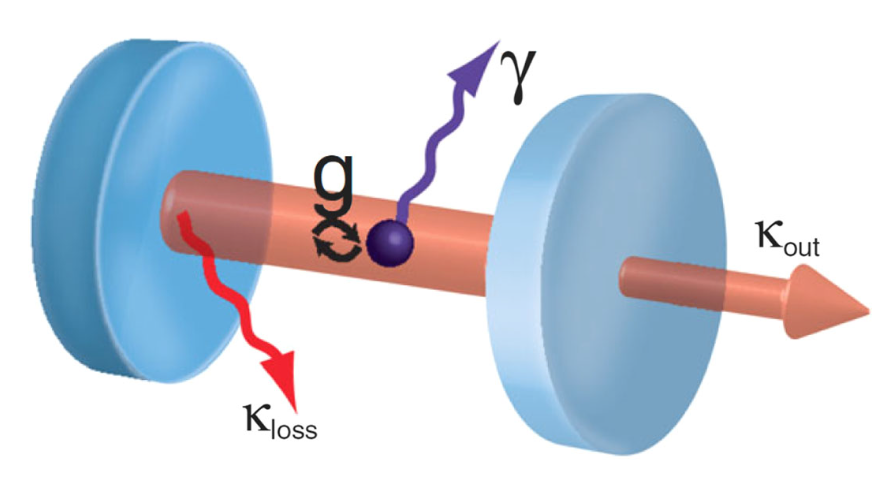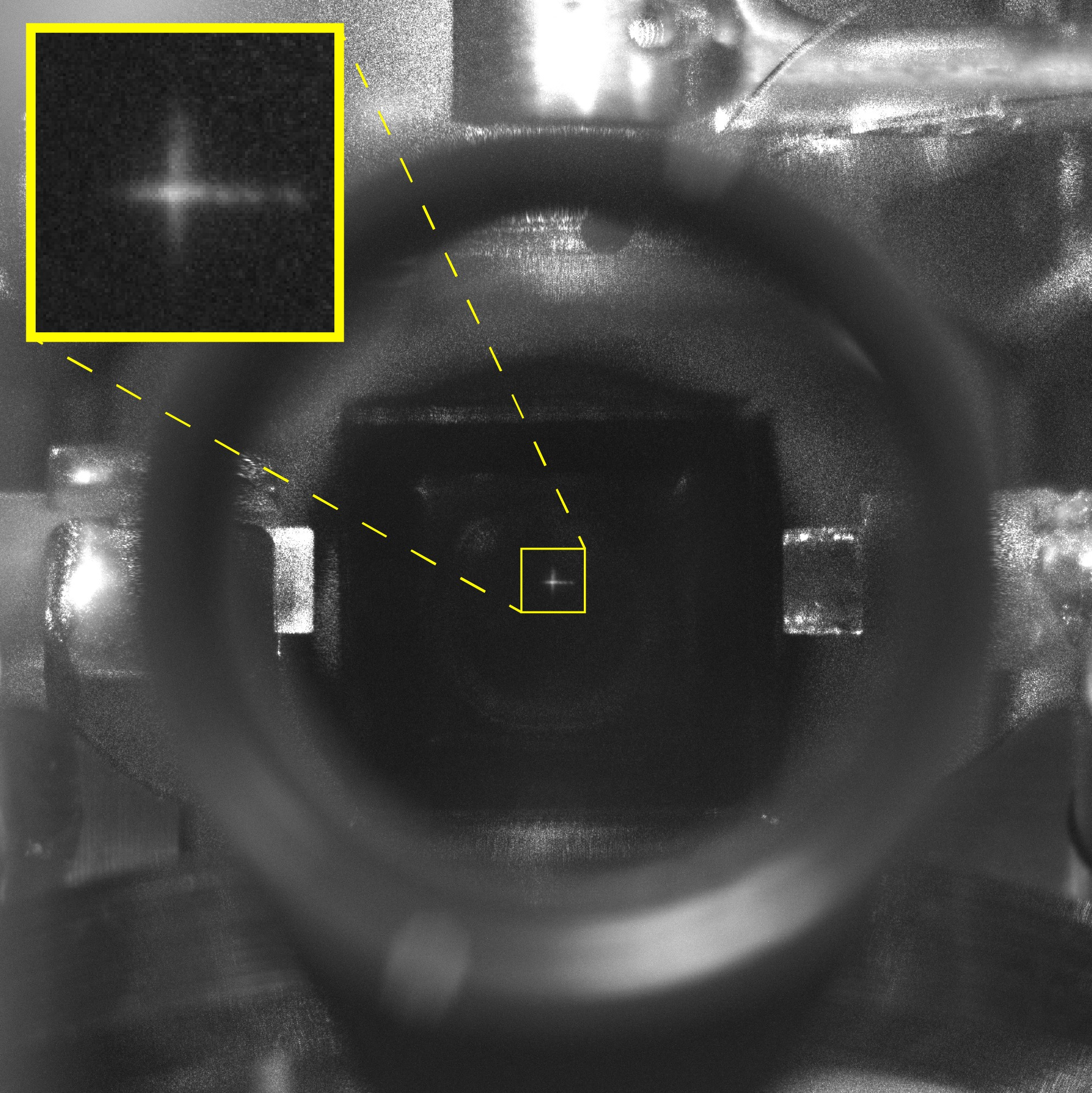Photonic Quantum Gates
At the core of efficient quantum interconnects are high-finesse optical cavities. As atoms are placed in the tightly focussed light mode of a resonant optical cavity, atom-photon coupling can be strongly enhanced, as a result of the characteristic dynamics of cavity-QED systems. On the one hand, the atomic emission rate is strongly impacted by the coupling between the atomic dipole and the vacuum modes in the cavity. On the other hand, photons in the cavity modes decay via coupling to the environment and through the cavity mirrors.
The general dynamics of this system is governed by the input-output formalism for a two-level atom coupled to an optical cavity. A figure-of-merit that captures this interplay of the different processes is the cooperativity C = g2/2kγ. High cooperativity (C>>1) leads to Purcell-enhancement which comes with two highly desirable effects: First, the emission rate of the atom is enhanced by a factor C over the natural emission rate. Second, the probability of the atom to emit into the cavity mode goes as C/(C+1), meaning that emission into the cavity mode can be strongly enhanced, approaching unity, minimizing loss.

A cavity QED system in which atoms are strongly coupled to the electromagnetic field of a high finesse cavity.
Our team has extensive experience with the integration of atomic systems with optical cavities. The team has developed a double cavity QED system using trapped cold atoms. The key elements of the experimental platform are two macroscopic Fabry-Perot cavities aligned in an orthogonal geometry, with a cold 87Rb ensemble in a magneto-optical trap (MOT) lying at the crossing point of the two cavity modes. In order to achieve near Doppler-free collective enhancement, we use diode lasers locked at Rb D2 lines (780 nm) producing cooling fields 12 MHz detuned from the F=2 to F'=3 transition and repumping fields resonant with the F=1 to F'=2 transition, to achieve polarization gradient sub-Doppler cooling.
Currently, we trap 4x106 atoms in the Rb ensemble at 45μK temperatures. This provides about 40,000 atoms in the crossed region of the two cavity modes. The optical cavities are stabilized to the Rb D2 transitions using two 795 nm diode lasers that are locked to be off-resonant from all D1 transitions with variable detunings. This design fulfills three purposes: (1) the cavity stabilizing lasers are 15 nm away in wavelength from the D2 transitions where the experiments are conducted so that they stabilize the cavities without impacting the nonlinear dynamics; (2) these lasers are also detuned away from D1 transitions so that no competing processes would happen simultaneously; and (3) the detunings are adjustable such that it is possible to create desired cavity mode fluorescence signals without destroying the MOT, which is paramount to align the two cavities such that their modes overlap at the exact center of the MOT.

Double cavity QED system with the crossed modes fluorescing in a 87Rb MOT. The optical cavities are stabilized with the PDH technique using two tunable D1 line diode lasers (795 nm). Inset: Zoomed fluorescence image at the center of the setup where the two cavity modes cross with the MOT.
Through a double vacuum Rabi splitting measurement, we have cavity coupling strengths to be gH, kH = 66 MHz for the horizontal cavity, and gV = 58 MHz for the vertical cavity. The calculated cooperativities are 42 and 55 respectively.
We would like to demonstrate the compatibility of our multi-cavity QED concept with cavities that can lead to even higher cooperativities (>200), while maintaining strong coupling to many small volume cavities. This could help scaling of the current double-QED setup into a many-mode (4 or more light modes) quantum router, where photonic signals can be received and routed to fiber-based communication channels with very high efficiency. Additionally, the fiber cavities can be coated for several wavelengths of operation, including the infrared (780, 795 nm) and telecom (1324, 1367 nm) rubidium wavelengths. This will allow us to drive the cold atoms using a rubidium diamond configuration, facilitating the frequency conversion to telecom.
